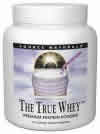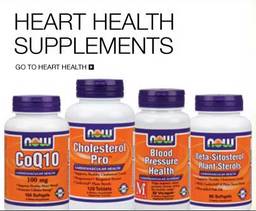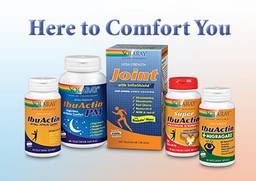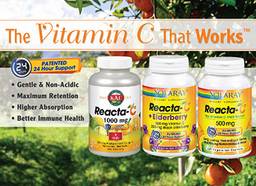|
Search Term: " Lifer "
Cannabis Terpene Cocktails—Healthy and . . . Herbal
Date:
August 27, 2017 04:14 PM
Instead of chilling you out, this Cannabis Terpene Cocktail is meant to act as a mood lifter. As terpenes are legal in all states (not just the ones that have legalized recreational cannabis use) this cocktail can be served anywhere. The mixologists who make this even claim that imbibing could have potential health benefits. It can help with inflammation and work as a muscle relaxer and sleep aid. The terpene derived from cannabis has many positive uses and the mixologists who use it are looking to incorporate it into society in a positive and intelligent way. Key Takeaways:
"Terpenes from cannabis have some of the strongest anti-inflammatory properties of any plant, according to proponents, and a good number of doctors are now studying their effects and benefits in replacing opioids." Read more: http://www.vogue.com/article/cannabis-terpene-cocktails-health-benefits
(https://vitanetonline.com:443/forums/Index.cfm?CFApp=1&Message_ID=5187) CORDYCEP: MEANING AND BENEFITS
Date:
July 22, 2015 01:25 AM
Cordyceps is simply a fungus. Not typically kitchen friendly, but if health is your number one target, then it will make the best supplement in your system. Before we go deeper into its benefits let us first have a clear understanding of what this unpopular yet effective medicinal fungi is. What is Cordyceps? It is simply an ascomycete fungi genus with approximately four hundred species that are mainly parasitic. They weren't considered beneficial to health until a recent discovery of Cordyceps Sinensis popularly known as a caterpillar fungi (It attaches itself on the caterpillar). Despite limited research on its health benefits, Cordyceps seems to be the best remedy for most of the health complications related to poor diet, lack of exercise and more. Let us take a look at some of its benefits. 1. A remedy for kidney disease - Cordyceps prevent rat's renal fibrosis. This condition (renal fibrosis) is evident in later stages of the organ. However, there is still need for more research on this fact. 2. Slows down Tumor Growth - There is some proof that Cordyceps trigger the immune system to combat cancer. Ability to improve the immune system was due to a result of research where there were some indications that Cordyceps slowed down tumor growth in many animals. 3. Increase libido - Lots of studies shows that Cordyceps raise the level of testosterone in rats. There are some claims that it also enhances sexual performance that is also yet to be proven. Apart from slowing down tumor growth, kidney disease and increasing sexual performance that are yet to be confirmed, Cordyceps have other numerous health benefits according to researchers that are, * Increase body oxygen uptake - Needed for maximum athletic performance. * Reduce the aging effects - Slows down aging that has remained a bother for centuries. * Strengthen muscles - For weight lifters and athletes looking to gain strong muscles with a little workout. * Improves lung function - Improves breathing needed for athletic performance * Good for the liver - Slows down liver complications that are known to lead to a liver transplant. There are also some claims that Cordyceps may replace the steroids when it comes to improving athletic performance and muscle building. Among these claims is that Cordyceps can enhance stamina needed mostly by sportsmen and women. Other researchers claim that it can tone muscles, increase energy and even reduce fatigue after a long time of work. In summary, the caterpillar fungi (Cordyceps) has a lot in store when it comes to solving health complications. However, these claims are yet to be confirmed. If the facts are as real as the researchers claim them to be, then Cordyceps will be at the top of the top list of best natural supplements ever discovered. https://en.wikipedia.org/wiki/Cordyceps //www.gnet.org/cordyceps-benefits/ //www.healthline.com/health/cordyceps-exercise-performance#1 //www.drugs.com/npp/cordyceps.html
(https://vitanetonline.com:443/forums/Index.cfm?CFApp=1&Message_ID=3179) What are the health benefits of organic Cacao?
Date:
April 24, 2014 02:58 AM
Do you know what Cacao and some of its health benefits are? What is a cacao Cacao is a kind of a tropical tree, which is part of the evergreen family that produces chocolate from its seeds in its raw state; that is before both sugar, and fats or some other forms of sweeteners are added to it. First, some of the benefits for finding the Cacao tree are that the cacao tree is grown under the shade of much bigger and different trees thus having a very profound effect on the Cacao seeds, which instead tends to be more potent and higher in antioxidants. The Cacao tree comes in different species that is Forastero, Trinitario and Caffeine. Cacao is used to describe both the seeds and the tree as well as the pods which holds the actual Cacao seeds/ beans which are also known as nibs. Well, the terms Cocoa and Cacao were often interchangeably used mistakenly to mean a similar thing. However, both the terms are used to differentiate different parts of the process and ingredients where Cocoa refers to the processed and sweetened Cacao. When the Cacao seeds without the shells are crushed and liquified into what is known as chocolate liquor, a dark chocolate is therefore created. Dark chocolate, which is synonymous with pure chocolate, exhibits a more powerful and a stronger effect of this health enhancing ingredients. The organic Cacao nibs’ offers a real chocolate treat as they are crunchy, flavorful and packed with powerful nutrients and antioxidants as well as natural mood lifters. Cacao in its raw form is regarded as the most potent and provides many benefits as it is packed with lots of nutrients such as vitamins and antioxidants, essential minerals, Phenylethylamine and many more. This therefore makes Cacao either to act as multivitamin or to be regarded as super food. Benefits of cacao Although the Cacao nibs produces chocolate which when taken in very large quantities may prove to be very dense in calories thus being unhealthy. However, when taken in moderation this product can be highly nutritious while providing numerous health benefits such as intestinal regularity, heart and blood vessels as well as blood sustained sugar levels not to mention lowering of cholesterol, boosting cognitive performance, providing antidepressant benefits, elevating ones mood by boosting ones endorphin's. Cacao also contains poly phenols and more oxidants per cup which when taken offers the body a chance to fight cancer, aging, heart diseases. Additionally, some of the nutritional and health value that are offered by the Cacao arises from some of the beneficial ingredients such as Theobromine which is a mild stimulant to offer a diuretic effect hence helping to push toxins out of one's body. This helps to enhance one's mood. The Phenylethylamine on the other hand also acts to enhance a person’s mood making one to feel a sense of well being. Cacao increases the level of serotonin that one's brain produces which is a feel good hormone. Other essential minerals that are also found in Cacao include magnesium, Iron, zinc, copper, manganese, potassium while the essential vitamins that one will receive from Cacao are vitamin A,B1,2,3 and C,E as well as the Pantothenic acid. Sources
(https://vitanetonline.com:443/forums/Index.cfm?CFApp=1&Message_ID=3102) What are the health benefits of organic Cacao?
Date:
April 24, 2014 02:58 AM
What is a cacao Cacao is a kind of a tropical tree, which is part of the evergreen family that produces chocolate from its seeds in its raw state; that is before both sugar, and fats or some other forms of sweeteners are added to it. First, some of the benefits for finding the Cacao tree are that the cacao tree is grown under the shade of much bigger and different trees thus having a very profound effect on the Cacao seeds, which instead tends to be more potent and higher in antioxidants. The Cacao tree comes in different species that is Forastero, Trinitario and Caffeine. Cacao is used to describe both the seeds and the tree as well as the pods which holds the actual Cacao seeds/ beans which are also known as nibs. Well, the terms Cocoa and Cacao were often interchangeably used mistakenly to mean a similar thing. However, both the terms are used to differentiate different parts of the process and ingredients where Cocoa refers to the processed and sweetened Cacao. When the Cacao seeds without the shells are crushed and liquified into what is known as chocolate liquor, a dark chocolate is therefore created. Dark chocolate, which is synonymous with pure chocolate, exhibits a more powerful and a stronger effect of this health enhancing ingredients. The organic Cacao nibs’ offers a real chocolate treat as they are crunchy, flavorful and packed with powerful nutrients and antioxidants as well as natural mood lifters. Cacao in its raw form is regarded as the most potent and provides many benefits as it is packed with lots of nutrients such as vitamins and antioxidants, essential minerals, Phenylethylamine and many more. This therefore makes Cacao either to act as multivitamin or to be regarded as super food. Benefits of cacao Although the Cacao nibs produces chocolate which when taken in very large quantities may prove to be very dense in calories thus being unhealthy. However, when taken in moderation this product can be highly nutritious while providing numerous health benefits such as intestinal regularity, heart and blood vessels as well as blood sustained sugar levels not to mention lowering of cholesterol, boosting cognitive performance, providing antidepressant benefits, elevating ones mood by boosting ones endorphin's. Cacao also contains poly phenols and more oxidants per cup which when taken offers the body a chance to fight cancer, aging, heart diseases. Additionally, some of the nutritional and health value that are offered by the Cacao arises from some of the beneficial ingredients such as Theobromine which is a mild stimulant to offer a diuretic effect hence helping to push toxins out of one's body. This helps to enhance one's mood. The Phenylethylamine on the other hand also acts to enhance a person’s mood making one to feel a sense of well being. Cacao increases the level of serotonin that one's brain produces which is a feel good hormone. Other essential minerals that are also found in Cacao include magnesium, Iron, zinc, copper, manganese, potassium while the essential vitamins that one will receive from Cacao are vitamin A,B1,2,3 and C,E as well as the Pantothenic acid. Sources
(https://vitanetonline.com:443/forums/Index.cfm?CFApp=1&Message_ID=3101) ROLE OF BRANCH CHAINED AMINO CIDS IN MUSCLE GROWTH AND ATHLETIC PERFOMANCE
Date:
January 20, 2014 09:06 AM
Amino Acid
Leucine, Isoleucine and Valine are Branched Chained essential Amino Acids(BCAA). These three amino acids account for 35% of the essential amino acids in muscle protein and 40% of the essential amino acids required by humans. Due to their importance, dietary supplementation of these amino acids has become quite common due to their beneficial effects. BCAAs help burn patients to recover faster as the amino acids in high concentration provide the material for the cells to repair themselves at a faster rate. At the same time, BCAAs help in managing diabetes Are very popular due to their many functions in the body of an athlete. This is because unlike other amino acids, it is metabolized in muscle tissue, not in the liver thus it has a more direct effect on the muscles than other amino acids. These functions include:
(https://vitanetonline.com:443/forums/Index.cfm?CFApp=1&Message_ID=2974) Why Take An L-Arginine And L-Citrulline Amino Acid Complex?
Date:
January 18, 2014 11:52 PM
Arginine and citrulline
(https://vitanetonline.com:443/forums/Index.cfm?CFApp=1&Message_ID=2972) L-Alanine Non Essential Amino Acid
Date:
January 05, 2009 04:31 PM
L-Alanine is one of 20 amino acids that are used by the body to manufacture the proteins essential for life. Each protein possesses specific biological properties that are imparted by the sequence of amino acids it contains. Proteins control the chemistry that takes place within the cells of our body, and comprise all of the enzymes that catalyze the body's biochemistry. Amino acids are also the building blocks of DNA that determines the genetic make-up of individuals, and that also provides recipes or templates for the production of proteins from amino acid sequences. There is a different DNA template for every protein required by the body that determines which of the 20 amino acids are needed, and in what order they are to be combined with one another to manufacture the desired protein. 10 of these 20 amino acids can be synthesized by your body's biochemistry, the other 10 being essential parts of your diet. If you fail to include just of these 10, then your body will break down its proteins until it has obtained a sufficient supply of that amino acids for its needs. That involves muscle and other tissue degradation, and is one of the symptoms of malnutrition. Amino acids are not stored, and a daily supply is essential to avoid these symptoms. L-Alanine is one of the ten that the body can manufacture, and used by the body to help build protein and also to enable the body to make use of glucose to generate energy. It does so as part of what is known as the glucose-alanine cycle. During anaerobic exercise, such as in weightlifting and sustained running, muscles produce lactate and also alanine. The alanine is passed on to the liver where it is converted to energy via its conversion to glucose. This is not a particularly efficient means of creating energy because a byproduct of the process is urea, the removal of which in turn requires energy. However, it serves its purpose as an energy source once the liver is depleted of glycogen. In fact that is the major use to which alanine appears to be put by the body: the conversion of glucose to energy. The way the glucose-alanine cycle works is that a process known as transamination produces glutamate from the amino groups of amino acids that are degraded during exercise. Glutamate is then converted to pyruvate by means of the enzyme alanine aminotransferase, with the production of alanine and alpha-ketoglutarate. This is a reversible reaction, and after the alanine has been carried by the bloodstream to the liver, the reaction reverses with the regeneration of pyruvate that undergoes gluconeogenesis (generation of glucose). The result of this is glucose that returns to the muscle tissue to provide more energy. The glutamate is broken down to the ammonium ion in the mitochondria, which in turn enters the urea cycle with the production of urea. In a nutshell, then, the glucose-alanine cycle removes glutamate and pyruvate from muscle tissue to the liver where glucose is generated from the pyruvate and returned to the muscle. Since gluconeogenesis involves the expenditure of energy, and this occurs in the liver rather than in the muscle, all the energy in the muscle can be used for muscle contraction. L-Alanine possesses other properties, among them the ability to help maintain the health of the prostate. A study of benign prostatic hyperplasia (enlarged prostate) indicated that treatment with L-alanine, glutamic acid and glycine over a period of three months reduced the symptoms. However, make sure that you consult your physician before using alanine in this way. This is not because there are any known adverse side effects, because there are not, but because it I always wise to so with any supplement taken with a view to treating any medical condition. A less obvious application derives from the fact that it forms a stable free radical when deaminated. Deamination can be initiated by radiation, and so the concentration of this free radical can be measured to ensure that the correct dose of radiation is being given in dosimetric radiotherapy. It is not always easy to control the dose accurately, and this property of alanine allows it to monitored and to ensure that it is neither too low to have the desired effect, nor dangerously high. Although it is a non-essential amino acid, and can be produced by the body, a dietary supply or supplement is advantageous if extra energy is required. Good dietary sources of L-alanine include meats, seafood, eggs, nuts, beans, seeds, brewer's yeast, corn and legumes among others. Supplements are also available, and useful for body-builders, weightlifters and others involved in anaerobic exercise. Due to the glucose-alanine cycle, it can possibly provide energy when lactate build-up would otherwise lead to muscle cramps. Those for whom a supplement could be useful are athletes and others who are trying to build muscle and stamina, or reduce their body fat and also the obese and overweight for the same reason. There is also evidence that a combination of the amino acids alanine, glycine and arginine can help to reduce arterial plaque from oxidized low density lipoproteins, and can also help to reduce high blood pressure. Deficiencies are rare, although groups that do not eat meat should be careful to eat foods with a good alanine content. There are no known side effects of a deficiency since the body will generate what is needed for normal purposes, and while the supplement appears to have no side effects, it is advisable that pregnant and lactating women should first seek medical advice. The same applies if you suffer from hypertension or diabetes. High doses of alanine might also affect those with kidney or liver disease.
Although the benefits of supplementation of L-alanine might not be immediately obvious, the results and the science indicate that it is effective in making better use of blood glucose in that the adenosine triphosphate (ATP) created in the muscle tissue is allowed to be expended on muscle contraction while the glucose-alanine cycle provides the energy needed for gluconeogenesis.
(https://vitanetonline.com:443/forums/Index.cfm?CFApp=1&Message_ID=1958) Potassium And Magnesium
Date:
December 30, 2008 01:08 PM
Potassium and magnesium are the two most common minerals found within the cells of your body. They each have specific individual functions within your body, and together help to maintain the correct balance of electrolytes and the proper functioning of smooth and striated muscles. That includes allowing muscles to relax properly rather than to cramp. Before discussing this, let's have a look at the major individual properties of these two metallic minerals with respect to the body's biochemistry. Magnesium is needed to ensure the proper functioning of the sodium/potassium pump. This is a complex topic, and we shan't dwell on it at length here, although the basics are that it is responsible for the movement of ions into and out of cells. Sodium and potassium ions are moved in opposite directions across the cell plasma membrane, three sodium ions being pumped out for every two potassium ions pumped into the cell. This is of particular importance to nervous cells responsible for transmitting impulses in response to specific stimuli. In the event of a magnesium deficiency, this pumping action is impaired and the sodium/potassium balance within and without the body cells are imbalanced. This in turn impairs the response of nerve cells to stimuli. Both magnesium and potassium can be depleted through the use of diuretics, in which case a magnesium supplement can redress the imbalance. There are several consequences of such an electrolytic imbalance, some having potentially serious consequences. Many can cause death if left untreated, although the symptoms usually allow appropriate medical treatment prior to the condition becoming fatal, such treatment frequently involving administration of magnesium and potassium. Among these are: Calcium overload in certain heart cells that reduces the effective use of oxygen and ATP and causes overactive contraction of the heart muscle. Spasms in coronary blood vessels. Over-activity of the striated muscle fibers, leading to cramps in the calf and thigh muscles, for example. Cramp and pain in the smooth muscles of hollow organs such as the bladder or uterus that can also cause premature labor. Several heart problems caused by an increase in energy consumption and a calcium overload and potassium deficiency that leads to cardiac ischemia and arrhythmia that continue to create a serious medical condition and hazard to life. Potassium, that can stop the heart if given in excess, can be just as harmful if present in too small a concentration. The whole situation creates a self-perpetuating cycle that can be broken by a magnesium and potassium supplement that restores the correct gradient of potassium and magnesium across the cell membrane, improves the function of the sodium/potassium pump and reduces the excess cellular calcium by replacing it with magnesium. This only works if both potassium and magnesium are taken together: just either alone is no good. It also takes time for the effect to occur, so the supplement is not suitable for emergency use. A regular supply can prevent the condition occurring. There are many other properties that magnesium and potassium possess with regard to the body's biochemistry such as the effect of magnesium in activating certain enzymes. However, in discussing relaxation, both of these essential minerals have a significant part to play. It has been mentioned that a magnesium and calcium deficiency causes spasms and cramps in the smooth and striated muscles, and the corollary is also true. Magnesium and potassium can be used to relieve such cramps, and relax muscle tissue. Hence, because it can relax excited smooth bronchial muscle tissue, magnesium can be used to relieve asthma attacks. The intravenous administration of magnesium is, in fact, an accepted and proven clinical treatment for acute asthma attacks. In the same way, magnesium has been used to treat muscle spasms and cramps. Again, it is not an immediate treatment for emergency use, but can be used over a period of days to treat athletes with a history of muscle spasms. Such spasm frequently occur after prolonged periods of exercise, when magnesium and potassium, among other electrolytes, can be lost through a combination of sweating and urination. However, this is not the only means by which magnesium is lost from your body cells, and probably not even the main one. Less obvious, but likely of more importance, is the transfer of magnesium from the plasma into the red blood cells (erythrocytes). The amount by which this occurs is directly proportional to the more anaerobic the exercise, hence the need by athletes and weightlifters for more magnesium. It can be rapidly lost through exercise with insufficient oxygen, and cause their muscles to cramp up. Magnesium deficiency is common in Americans, although factors such as high calcium intake, alcohol intake, diuretics, and kidney and liver disease are more responsible for this than a dietary deficiency. Potassium is readily available in bananas, brown rice, potatoes, tomatoes and oranges and dietary deficiencies are not common although supplements are readily available. Magnesium is also known to play an important part in the secretion and use of insulin by the body. Supplementation with magnesium can help diabetics to make best use of insulin, become more tolerant to glucose and improve the fluidity of the membrane of red blood cells. The mineral; also has a small but definite effect in lowering blood pressure. Other uses for magnesium supplements include congenital heart failure, where higher magnesium contents lead to greater life expectancy and chronic fatigue syndrome (CFS) where magnesium supplements can significantly increase energy levels. Other uses to which your body puts potassium other than to allow proper muscle contraction and relaxation and to maintain the balance of electrolytes in the body, includes the function of brain and nerve neurons. This, however, is academic since should your potassium levels drop by 50%, death would result.
Potassium, Magnesium and Calcium are essential in maintaining the proper workings of your body cells, although the most visible effect of magnesium and potassium is their relaxation properties on the body, put to specific use by sportsmen and women, particularly those involved in the more anaerobic sports.
(https://vitanetonline.com:443/forums/Index.cfm?CFApp=1&Message_ID=1955) Inosine
Date:
December 19, 2008 12:35 PM
Inosine is a specific type of glycosylamine that consists of a base bound to a deoxyribose or ribose sugar. This type of glycosylamine is referred to as a nucleoside, others being adenosine, thymidine and cytidine. It is available naturally in brewer’s yeast and major organ offal such as liver and kidney. It’s function in animal biochemistry is in the production of ATP (adenosine triphosphate), often known as the molecule of energy, that is essential for the generation of energy by the mitochondria in our body cells. It’s biochemistry is described below. Inosine is synthesized as inosine monophosphate by means of a complex series of biochemical reactions. The inosine monophosphate is a precursor for adenine, a nucleotide and purine base that reacts with ribose to form adenosine. This is another nucleoside that can be phosphorylated to produce adenosine monophosphate (AMP), the diphosphate (ADP), the triphosphate (ATP) and cyclic adenosine monophosphate (cAMP). Each of these is involved in the metabolism of energy in the mitochondria. Glucose undergoes a number of enzyme-catalyzed reactions in the presence of oxygen that ultimately breaks it down to water and carbon dioxide, plus at least 36 molecules of ATP via glycolysis and then the Krebs cycle. The ATP reacts with water to release energy and form ADP. The ADP can then be phosphorylated to produce more ATP. The starting point of all of this is inosine, and it is little wonder this nucleoside is used by athletes to help boost their energy. Not only that, however, but adenine is also the precursor of amino and nucleic acids responsible for the generation of RNA and DNA, and it is also responsible for the production of many coenzymes. These provide other opportunities for its use elsewhere in medicine, and it has also been found to possess other medical properties that will be discussed later. It was in the 1970s that inosine was first used to boost athletic performance due to its part in the generation of the energy needed by every muscle in the body. Its use began in eastern countries, although evidence at the time did not support the theory. Nevertheless, this did not deter its advocates, and inosine continued to be used by athletes, a practice that has now spread world-wide. It has been found to be a metabolic activator, in that it supports metabolism through the generation of energy. Inosine has been used by power lifters for heavy weight training to increase the capacity of the blood to carry oxygen, and strength athletes, particularly of the Eastern Bloc, used it from the mid 1970s onwards. Inosine appears to increase the natural ability of the body to handle strenuous workouts, although there is no scientific proof of this. However, those that use it claim an increased ability to carry out intensive training workouts and an improvement in their competitive performance. The nucleotide can penetrate the cell walls and get to where it is needed to take part in the metabolism of energy through the production of ATP. Now, however, inosine has an entirley different application in medicine. Studies have shown that it could support those suffering from MS (multiple sclerosis) and strokes through its pereceived neuroprotective properties. It appears to promote axonal rewiring, where undamaged neurons appear to grow new connections with damaged areas of the brain, and undamaged neurons seem to branch out to replace some of the damaged neurons. Inosine is also an intermediate in the production of uric acid through purine and purine nucleoside degradation. Uric acid is a powerful antioxidant, particularly in respect of peroxynitrite, a nucleophile that causes the type of axonal degradation that is associated with multiple sclerosis. It thefore helps in two ways: through the production of uric acid, and in promoting axonal rewiring that can improve brain function in patients. Another potential medical use for the substance is based upon the discovery that inosine and related compounds can act as powerful anti-inflammatories through their effect on inflammatory macrophage proteins. Certain conditions can cause the release of these macrohages, and where it is an undesirable side-effect, inosine can be administered to prevent it occuring. Inosine appears to inhibit the production of pro-inflammatory cytokines without inhibiting anti-inflammatory cytokines. It appears to do so extracellularly, although the effect can be reversed by the blockading of adenosine receptors. However, it is a convenient way of avoiding this sometimes serious condition, which is a natural function of the immune system, without affecting any other part of that system’s essential work. It is not an essential nutrient, since it is synthesized biochemically, but a supplement of inosine is certainly worth taking if you want to increase your ability to carry out athetic exercise requiring a high energy output and increased blood oxygen availability. It also helps to reduce recovery time, and proponents of its use claim that it enables you to exercise at a higher level for longer. Although the medical evidence for this is scant, not a lot of work has been done in trying to establish it, and those that use inosine in this way swear that it is effective. The theory certainly indicates that it should be effective in helping to produce more energy, and also that it should be able to make more oxygen available, and some athletes have been taking it for decades with excellent results. There are no known side effects of its use, although pregnant women and nursing mothers are recommended not to use it, as with many other health supplements the pathology of which have not been closely studuied. As with any supplement, you are highly recommended to consult your own doctor or physician when taking any supplement, particular if you have a current medical condition or are taking prescriptive medicines. If you are predisposed to gout, and some people are, the uric acid it produces can render inosine unsuitable. Uric acid reacts with calcium to produce the sodium urate that is deposited on the cartilage and tendons of the joints, particularly the big toe. It is a very painful condition, so those that have suffered gout in the past should not take inosine as a supplement.
Otherwise, its effect on your athletic performance might be academic!
(https://vitanetonline.com:443/forums/Index.cfm?CFApp=1&Message_ID=1951) Perplexed about Protein? immunoglobulins to boost the immune system.
Date:
April 29, 2006 01:58 PM
The Wellness RevolutionPerplexed about Protein? As protein and whey powders have advanced in popularity, the confusion about them has grown. In particular, protein processing technology has advanced by leaps and bounds; consumers are being presented with protein claims and counter-claims that are highly contradictory. The confusion is part of a rapid growth. Little Miss Muffet’s quiet dish of curds and whey has expanded from a minor sideline aid for weight lifters, with sales increases around to percent a year, into an explosive $1 billion a year industry, with some companies announcing sales growth of 110 percent in just the last year. The increase in market is from whey’s expanding appeal. As new technology has made whey’s nutritive value beneficial to a wide range of consumers, more people are using whey, and whey is being added to more products. The problem is, those advanced nutritive qualities are not included in all whey products. The fantastic immune benefits, for example, apply to only the top tier of whey products. Protein Quality The standard of protein quality—the ability to provide indispensable amino acids—is judged on the basis of digestibility, nutrients, and amino acid composition. Whey has historically been acknowledged as on of the best sources of high quality protein. With the increasing popularity of whey, attention on new processing methods has raised the bar on quality, and new products have greatly expanded nutritional values. What may have been an acceptable high-quality whey protein a few years ago, no longer makes the grade. Tony Lucchesi, Natural Sales Trainer at Source Naturals says, “The different processing methods have changed the entire protein market.” He explains, “In separating casein from whey, (a process used to make cheese), most processing methods use heat, chemical modification, or pH adjustments. These all damage the native protein structure. The result is little or no biological activity in the whey product. All the low temperature drying and micro-filtration won’t help if the raw material is denatured before a protein is dried and brought to market.” Damaged Proteins Damaged protein may have been acceptable a few years ago, but it isn’t now. Lucchesi continues, “Animal experiments have shown that polypeptides—whole, non-denatured proteins—have greater nutritional value than protein isolates.” Protein isolates are what is left after the pasteurization process. The protein has traditionally been “Cross cooked” out of its normal balance. “What you have left are incomplete bits and pieces of whole protein,” he says. These protein bits have only partial nutrients. New Whey The latest introduction to the protein category are concentrates, which are intact, biologically-active whole proteins. The entire difference is in the processing; high heat, acids, and traditional methods of separating the caseins from the whey are no longer used. The new processing preserves the nutrients of the protein. This is the method that is the basis for a new Source Naturals whey product, True Whey. Lucchesi says, “TRUE WHEY is different in that it was designed to provide nutritional support for enhanced immune function. The entire process was designed for nutritive value. The preservation of these nutrients—lactoferrin, glutamine, immunoglobulins—give TRUE WHEY a huge benefit to athletes, children, and anyone interested in boosting their immune system.” Per serving, TRUE WHEY offers 8 grams of un-denatured protein that includes 900 mg immunoglobulins and 190mg of lactoferrin. Its vanilla flavoring has gotten very high reviews, and it has a two-year shelf life. It appears that the bar has truly been raised in the whey protein category!
(https://vitanetonline.com:443/forums/Index.cfm?CFApp=1&Message_ID=1256) Carnitine Creatinate
Date:
December 08, 2005 03:33 PM
Carnitine CreatinateNeil E. Levin, CCN, DANLA 6/30/05LIKELY USERS: Athletes, Bodybuilders, Dieters, People who consume a lot of fat, People needing cardiovascular support (energy for the heart), People who need quick energy, especially for fast muscle response, People with muscle wasting problems (including the elderly), Weightlifters KEY INGREDIENTS: L-Carnitine and Creatine Monohydrate MAIN PRODUCT FEATURES: Carnitine Creatinate Monohydrate is a specialized form of Creatine bonded to L-Carnitine. Creatine is a compound natural to the human body that aids in the regeneration of ATP, the chemical energy used by muscle tissue. During exercise, large quantities of creatine are irreversibly consumed. Clinical studies have shown that oral supplementation with Creatine can increase the amount of Creatine available in muscles for ATP production. L-Carnitine is an amino acid that is necessary for the transfer of fatty acids into the fat-burning parts of the cell, facilitating energy production from fat. The combination of these two compounds can produce a synergistic effect, making NOW® Carnitine Creatinate an ideal energy supplement. ADDITIONAL PRODUCT USE INFORMATION & QUALITY ISSUES: Carnitine and Creatinate Monohydrate is a patented ingredient that has been the subject of research studies. It is supported by the scientific staff in the laboratories of both NOW Foods and the raw material supplier, both of which have a mutual interest in protecting the integrity and efficacy of this product. Protected by U.S. Patent No. 5,994,581 (L-Carnitine Creatinate Monohydrate). Look at the price: this is a better way to buy both supplements than purchasing them separately. This formula is suitable for vegetarians and is offered in both tablet and powder forms. SERVING SIZE & HOW TO TAKE IT: As a dietary supplement, every two tablets provide 1,000 mg. (one gram) each of both L-Carnitine and Creatine Monohydrate. Or one teaspoon provides 1,150 mg.) each of both L-Carnitine and Creatine Monohydrate. Take one or more servings per day with a carbohydrate source, such as fruit juice or sports drinks. COMPLEMENTARY PRODUCTS: CoQ10, carbohydrates, B-Complex vitamins, chromium, vanadium, Hawthorn leaf and flower extract, protein supplements. Adaptogenic herbs: ginsengs, Eleuthero, Rhodiola, Maca, Ashwaganda, licorice root CAUTIONS: none. PRODUCT SPECIFIC: This product is very sensitive to moisture. Please keep in the original packaging or in a moisture resistant container. Do not take more than 20 grams per day. Discontinue use if cramps of stomach upset occur, especially if taking large doses. Do not take if kidney disease is present. Do not use large doses of caffeine with creatine, as it may increase the possibility of muscle cramping. GENERAL: Pregnant and lactating women and people using prescription drugs should consult their physician before taking any dietary supplement. When taking any new supplement, use common sense and cautiously increase to the full dose over time to avoid any potential problems. Packages may contain moisture or oxygen controlling packets or canisters that are not intended for consumption. In order to maintain maximum freshness, please do not remove these from your bottle (until the bottle is empty). Please recycle your container. Disclaimer: These statements have not been evaluated by the FDA. This product is not intended to diagnose, treat, cure or prevent any disease. REFERENCES: Fang S-M (1998) Carnitine Creatinate. U.S. Patent 5,994,581. L-CARNITINE: Beers MH, Berkow R (eds). The Merck Manual of Diagnosis and Therapy, 17th ed. Whitehouse Station, NJ: Merck and Co., Inc, 1999, 881-3. Broquist HP (1994) Carnitine, in Modern Nutrition in Health and Disease, 8th ed., Shils ME, Olson JA, Shike M (eds.) Lea & Febiger, Philadelphia, pp. 459-465. Casey A, Greenhoff PL (2000) Does dietary creatine supplementation play a role in skeletal muscle metabolism and performance? Am J Clin Nutr 72(suppl):607S-17S. Columbani P, Wenk C, Kunz I, et al. Effect of L-carnitine supplementation on physical performance and energy metabolism of endurance-trained athletes: a double blind crossover field study. Eur J Appl Physiol 1996;73:434-9. Dal Negro R, Pomari G, Zoccatelli O, Turco P. L-carnitine and rehabilitative respiratory physiokinesitherapy: metabolic and ventilatory response in chronic respiratory insufficiency. Int J Clin Pharmacol Ther Toxicol 1986;24:453-6. Dal Negro R, Turco P, Pomari C, De Conti F. Effects of L-carnitine on physical performance in chronic respiratory insufficiency. Int J Clin Pharmacol Ther Toxicol 1988;26:269-72. Del Favero A. Carnitine and gangliosides. Lancet 1988;2:337 [letter]. Dipalma JR. Carnitine deficiency. Am Fam Physician 1988;38:243–51. Digiesi V, Palchetti R, Cantini F. The benefits of L-carnitine in essential arterial hypertension. Minerva Med 1989;80:227-31. Giamberardino MA, Dragani L, Valente R, et al. Effects of prolonged L-carnitine administration on delayed muscle pain and CK release after eccentric effort. Int J Sports Med 1996;17:320-4. Green RE, Levine AM, Gunning MJ. The effect of L-carnitine supplementation on lean body mass in male amateur body builders. J Am Diet Assoc 1997;(suppl):A-72. Harris RC, Soderlund K, Hultman E (1992) Elevation of creatine in resting and exercised muscle of normal subjects by creatine supplementation. Clin Sci 83(3):367-374. Kendler BS. Carnitine: an overview of its role in preventive medicine. Prev Med 1986;15:373–90. Kobayashi A, Masumura Y, Yamazaki N. L-carnitine treatment for congestive heart failure—experimental and clinical study. Jpn Circ J 1992;56:86–94. Murray MT. The many benefits of carnitine. Am J Natural Med 1996;3:6-14 [review]. Tamamogullari N, Silig Y, Icagasioglu S, Atalay A. Carnitine deficiency in diabetes mellitus complications. J Diabetes Complications 1999;13:251–3. Yesilipek MA, Hazar V, Yegin O. L-Carnitine treatment in beta thalassemia major. Acta Haematol 1998;100:162-3. CREATINE MONOHYDRATE: Almada A, Mitchell T, Earnest C. Impact of chronic creatine supplementation on serum enzyme concentrations. FASEB J 1996;10:4567. Becque MD, Lochmann JD, Melrose DR. Effects of oral creatine supplementation on muscular strength and body composition. Med Sci Sports Exerc 2000;32:654-8. Casey A, Constantin-Teodosiu D, Howell S, et al. Creatine supplementation favorably affects performance and muscle metabolism during maximal intensity exercise in humans. Am J Physiol 1996;271:E31-E7. Earnest CP, Almada AL, Mitchell TL. High-performance capillary electrophoresis-pure creatine monohydrate reduces blood lipids in men and women. Clin Sci 1996;91:113-8. Earnest C, Almada A, Mitchell T. Influence of chronic creatine supplementation on hepatorenal function. FASEB J 1996;10:4588. Earnest CP, Snell PG, Rodriguez R, et al. The effect of creatine monohydrate ingestion on anaerobic power indices, muscular strength and body composition. Acta Physiol Scand 1995;153:207-9. Felber S, Skladal D, Wyss M, et al. Oral creatine supplementation in Duchenne muscular dystrophy: a clinical and 31P magnetic resonance spectroscopy study. Neurol Res 2000;22:145-50. Feldman EB. Creatine: a dietary supplement and ergogenic aid. Nutr Rev 1999;57:45–50. Green AL, Hultman E, Macdonald IA, et al. Carbohydrate ingestion augments skeletal muscle creatine accumulation during creatine supplementation in man. Am J Physiol 1996;271:E821–6. Green AL, Simpson EJ, Littlewood JJ, et al. Carbohydrate ingestion augments creatine retention during creatine feeding in humans. Acta Physiol Scand 1996;158:195-202. Greenhaff PL. Creatine and its application as an ergogenic aid. Int J Sport Nutr 1995;5:94-101. Greenhaff PL. The nutritional biochemistry of creatine. J Nutr Biochem 1997;8:610-8 [review]. Greenhaff PL, Bodin K, Soderlund K, et al. Effect of oral creatine supplementation on skeletal muscle phosphocreatine resynthesis. Am J Physiol 1994;266:E725-30. Greenhaff PL, Casey A, Short AH, et al. Influence of oral creatine supplementation on muscle torque during repeated bouts of maximal voluntary exercise in man. Clin Sci 1993;84:565-71. Harris RC, Soderlund K, Hultman E. Elevation of creatine in resting and exercised muscle of normal subjects by creatine supplementation. Clin Sci 1992;83:367-74. Hultman E, Soderlund K, Timmons J, et al. Muscle creatine loading in man. J Appl Physiol 1996;81:232–7. Juhn MS, O’Kane JW, Vinci DM. Oral creatine supplementation in male collegiate athletes: a survey of dosing habits and side effects. J Am Diet Assoc 1999;99:593–5. Kreider RB, Ferreira M, Wilson M, et al. Effects of creatine supplementation on body composition, strength, and sprint performance. Med Sci Sports Exerc 1998;30:73-82. Poortmans JR, Auquier H. Renaut V, et al. Effect of short-term creatine supplementation on renal responses in men. Eur J Appl Physiol Occup Physiol 1997;76:566–7. Poortmans JR, Francaux M. Long-term oral creatine supplementation does not impair renal function in healthy athletes. Med Sci Sports Exerc 1999;31:1108–10. Pritchard NR, Kaira PA. Renal dysfunction accompanying oral creatine supplements. Lancet 1998;351:1252–3 [letter]. Sewell DA, Robinson TM, Casey A, et al. The effect of acute dietary creatine supplementation upon indices of renal, hepatic and haematological function in human subjects. Proc Nutr Soc 1998;57:17A. Silber ML. Scientific facts behind creatine monohydrate as a sports nutrition supplement. J Sports Med Phys Fitness 1999;39:179–88 [review]. Sipila I, Rapola J, Simell O, et al. Supplementary creatine as a treatment for gyrate atrophy of the choroid and retina. N Engl J Med 1981;304:867-70. Stone MH, Sanborn K, Smith LL, et al. Effects of in-season (5-weeks) creatine and pyruvate supplementation on anaerobic performance and body composition in American football players. Int J Sport Nutr 1999;9:146-65. Stout JR, Eckerson J, Noonan D, et al. The effects of a supplement designed to augment creatine uptake on exercise performance and fat-free mass in football players. Med Sci Sports Exerc 1997;29:S251. Tarnopolsky MA. Potential benefits of creatine monohydrate supplementation in the elderly. Curr Opin Clin Nutr Metab Care 2000;3:497-502 [review]. Tarnopolsky M, Martin J. Creatine monohydrate increases strength in patients with neuromuscular disease. Neurology 1999;52:854-7. Tarnopolsky MA, Roy BD, MacDonald JR. A randomized, controlled trial of creatine monohydrate in patients with mitochondrial cytopathies. Muscle Nerve 1997;20:1502-9. Toler SM. Creatine is an ergogen for anaerobic exercise. Nutr Rev 1997;55:21-5 [review]. Vandenberghe K, Gills N, Van Leemputte M, et al. Caffeine counteracts the ergogenic action of muscle creatine loading. J Appl Physiol 1996;80:452–7. Vandenberghe K, Goris M, Van Hecke P, et al. Long-term creatine intake is beneficial to muscle performance during resistance training. J Appl Physiol 1997;83:2055-63. Walter MC, Lochmuller H, Reilich P, Klopstock T, Huber R, Hartard M, Hennig M, Pongratz D, Muller-Felber W. Creatine monohydrate in muscular dystrophies: A double-blind, placebo-controlled clinical study. Neurology. 2000 May 9;54(9):1848-50. PMID: 10802796 Walter MC, Reilich P, Lochmuller H, Kohnen R, Schlotter B, Hautmann H, Dunkl E, Pongratz D, Muller-Felber W. Creatine monohydrate in myotonic dystrophy: a double-blind, placebo-controlled clinical study. J Neurol. 2002 Dec;249(12):1717-22. PMID: 12529796
(https://vitanetonline.com:443/forums/Index.cfm?CFApp=1&Message_ID=994) | ||||||||||||||||||||||||||||||||||||||||||||||||||||||||



 Do you know what Cacao and some of its health benefits are?
Do you know what Cacao and some of its health benefits are? Essential amino acids are amino acids that cannot be synthesized by the body and must be ingested from plant and animal sources. There are ten essential amino acids needed by humans plus an extra two essential amino acids needed by infants. For athletes, a large amount of essential amino acids of all types is needed to help repair, grow and maintain muscle. This iis where 3 essential amino acids come into play .These are leucine, isoleucine and valine.
Essential amino acids are amino acids that cannot be synthesized by the body and must be ingested from plant and animal sources. There are ten essential amino acids needed by humans plus an extra two essential amino acids needed by infants. For athletes, a large amount of essential amino acids of all types is needed to help repair, grow and maintain muscle. This iis where 3 essential amino acids come into play .These are leucine, isoleucine and valine. Are popular amino acids among individuals who are enthusiastic about athletic performance and muscle development. L-Arginine and L-Citrulline are marketed as amino acid supplements that are especially useful for athletes who need an additional biochemical support for enhanced muscular energy and growth of muscle fibers. Bodybuilders and weightlifters are especially passionate about amino acid supplements because it helps them break through muscle development stagnation and reach more difficult goals in terms of muscle size or weight lifting potential.
Are popular amino acids among individuals who are enthusiastic about athletic performance and muscle development. L-Arginine and L-Citrulline are marketed as amino acid supplements that are especially useful for athletes who need an additional biochemical support for enhanced muscular energy and growth of muscle fibers. Bodybuilders and weightlifters are especially passionate about amino acid supplements because it helps them break through muscle development stagnation and reach more difficult goals in terms of muscle size or weight lifting potential.




